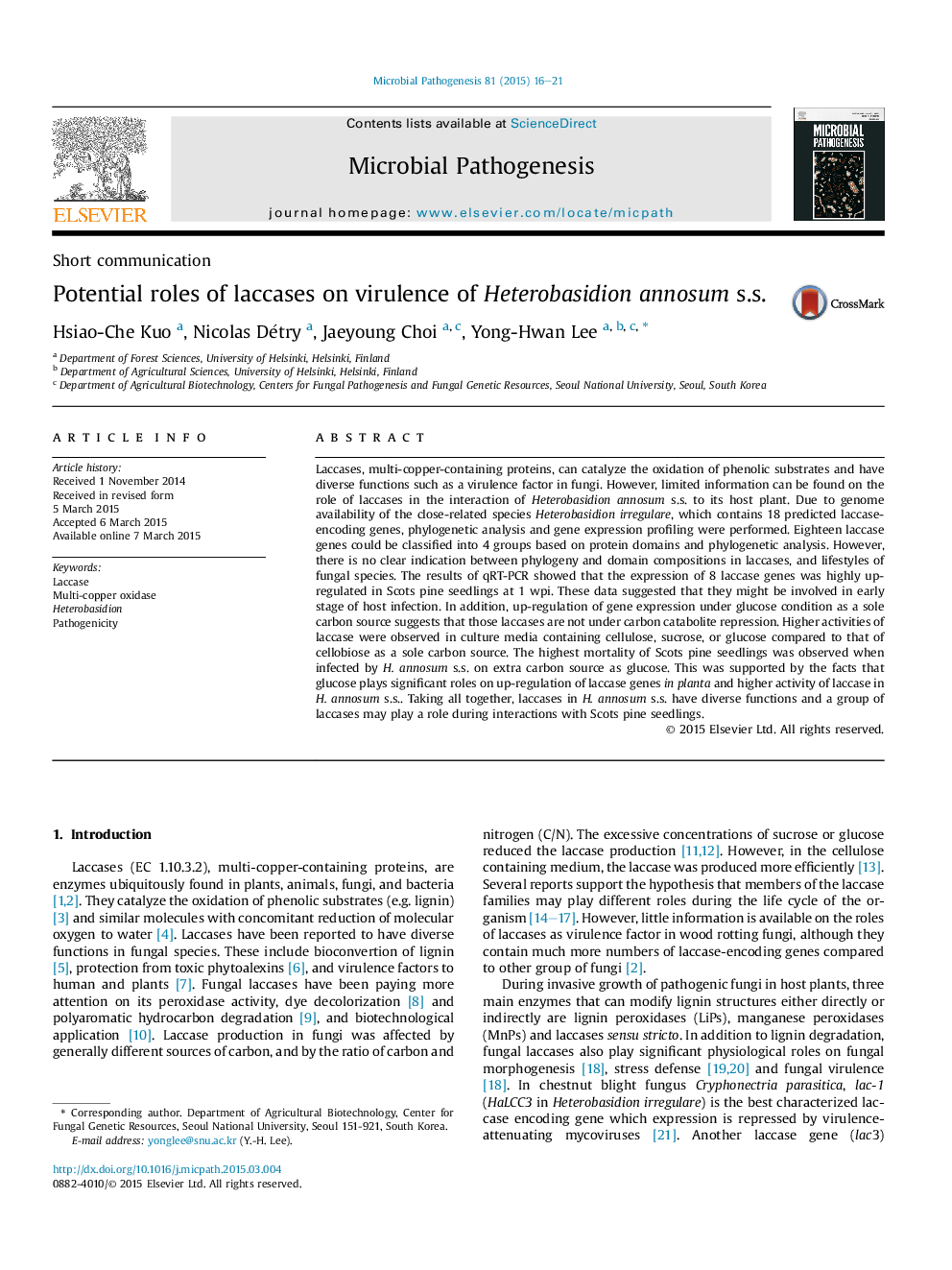| Article ID | Journal | Published Year | Pages | File Type |
|---|---|---|---|---|
| 3416491 | Microbial Pathogenesis | 2015 | 6 Pages |
•Eight laccases might be involved in early stages of host infection.•Glucose up-regulates expression of laccase genes in planta.•Higher laccase activity was induced by cellulose, sucrose, or glucose.•HaLCC15 could be a virulence factor.
Laccases, multi-copper-containing proteins, can catalyze the oxidation of phenolic substrates and have diverse functions such as a virulence factor in fungi. However, limited information can be found on the role of laccases in the interaction of Heterobasidion annosum s.s. to its host plant. Due to genome availability of the close-related species Heterobasidion irregulare, which contains 18 predicted laccase-encoding genes, phylogenetic analysis and gene expression profiling were performed. Eighteen laccase genes could be classified into 4 groups based on protein domains and phylogenetic analysis. However, there is no clear indication between phylogeny and domain compositions in laccases, and lifestyles of fungal species. The results of qRT-PCR showed that the expression of 8 laccase genes was highly up-regulated in Scots pine seedlings at 1 wpi. These data suggested that they might be involved in early stage of host infection. In addition, up-regulation of gene expression under glucose condition as a sole carbon source suggests that those laccases are not under carbon catabolite repression. Higher activities of laccase were observed in culture media containing cellulose, sucrose, or glucose compared to that of cellobiose as a sole carbon source. The highest mortality of Scots pine seedlings was observed when infected by H. annosum s.s. on extra carbon source as glucose. This was supported by the facts that glucose plays significant roles on up-regulation of laccase genes in planta and higher activity of laccase in H. annosum s.s.. Taking all together, laccases in H. annosum s.s. have diverse functions and a group of laccases may play a role during interactions with Scots pine seedlings.
